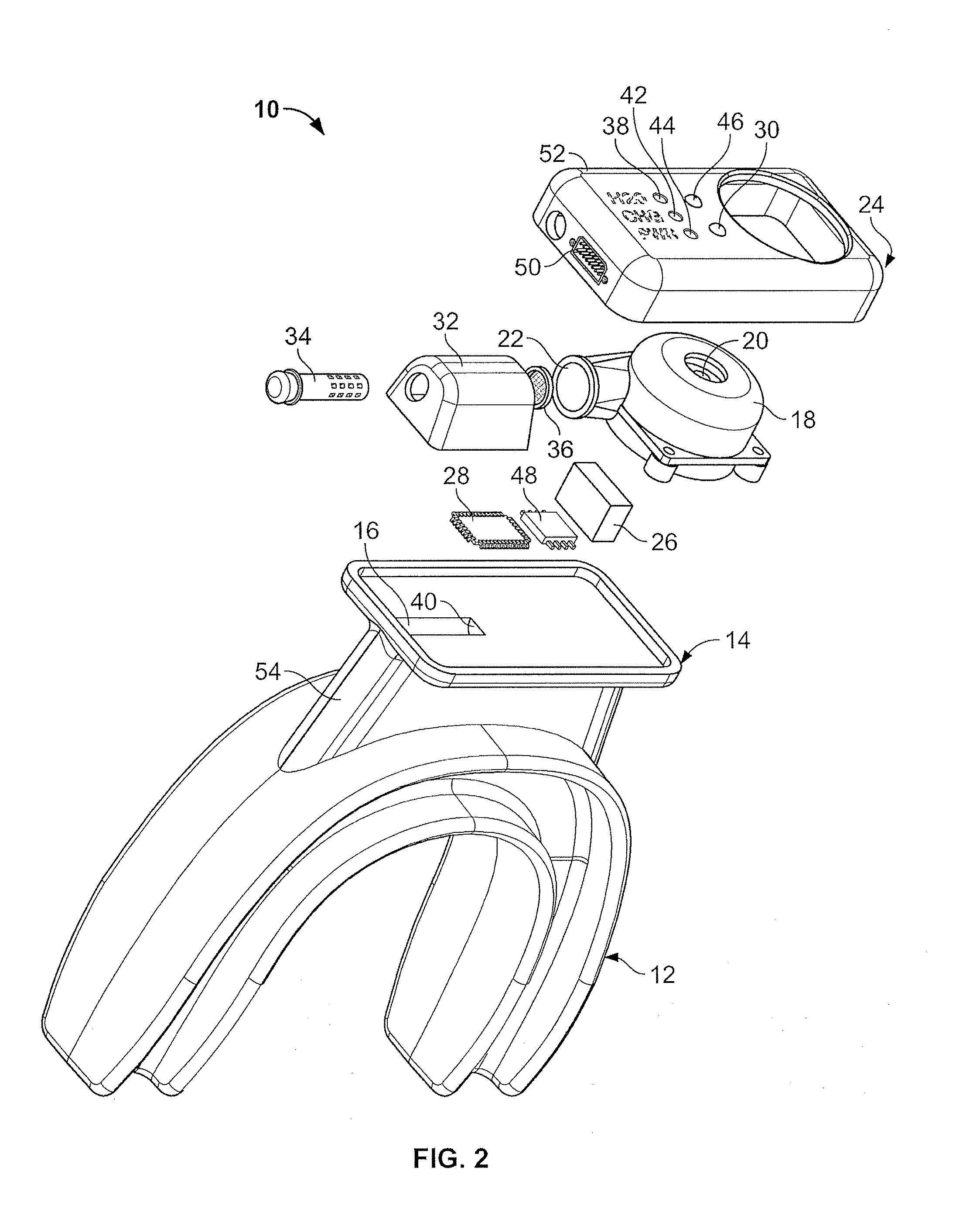Standalone cpap device and method of using
a cpap device and stand-alone technology, applied in the direction of valves, mechanical equipment, operating means/releasing devices, etc., can solve the problems of decreased ventilation (hypoapnea), decreased blood oxygenation, and disruption of sleep, so as to facilitate and efficiently manufacture and market, and low cost of manufacture. , the effect of low price of sal
- Summary
- Abstract
- Description
- Claims
- Application Information
AI Technical Summary
Benefits of technology
Problems solved by technology
Method used
Image
Examples
Embodiment Construction
[0027]Briefly, the present invention provides a CPAP device that includes the feature of having a blower mounted directly to the mouthpiece and / or nose mask that interfaces with the user. By this design, the CPAP device of the present invention does not require an air tube that conveys the pressurized air from the blower to the user's mouth and / or nose, as is typically found in conventional CPAP devices. Because the pressurized air has significantly less distance to travel from the blower to the user, air quality parameters such as air pressure, temperature, and relative humidity can be regulated more precisely. The improvement in the regulation and control of the relative humidity of the pressurized air is especially pronounced as a result of the reduced distance of air traversal. Data from a sleep study using a CPAP device according to a preferred embodiment of the present invention indicates that the absolute total air pressure needed for effective treatment of the disordered bre...
PUM
 Login to View More
Login to View More Abstract
Description
Claims
Application Information
 Login to View More
Login to View More - R&D
- Intellectual Property
- Life Sciences
- Materials
- Tech Scout
- Unparalleled Data Quality
- Higher Quality Content
- 60% Fewer Hallucinations
Browse by: Latest US Patents, China's latest patents, Technical Efficacy Thesaurus, Application Domain, Technology Topic, Popular Technical Reports.
© 2025 PatSnap. All rights reserved.Legal|Privacy policy|Modern Slavery Act Transparency Statement|Sitemap|About US| Contact US: help@patsnap.com



